An Enlightening Guide to Landscape Lighting: Shedding Light on Darkness
The adage ‘there is beauty in simplicity’ may hold validity in many aspects of life, but when it comes to landscape lighting, it’s the finer details that truly bring out the splendor of your outdoor space.
Landscape lighting, a fundamental yet frequently understated aspect of exterior home design, involves strategically placing outdoor lights to heighten and illuminate the aesthetic appeal of your landscape. It’s an art form that embellishes the natural beauty of your environment while simultaneously enhancing the function and safety of your outdoor living areas.
From a pragmatic perspective, landscape lighting illuminates pathways and driveways for safer navigation during nighttime hours. It deters potential trespassers by eliminating dark corners where shadows lurk. Yet beyond this practicality lies an aesthetic dimension that metamorphoses mundane landscapes into enchanting domains.
Just as a skilled painter uses varying shades of color to create depth and perspective in their artwork, successful landscape lighting manipulates light and darkness to accentuate existing elements and craft illusions. The selective lighting can seductively highlight features often overlooked during daylight hours: textured tree barks become intricate tapestries under soft lights; water features shimmer with ethereal beauty; architectural features stand stark against the night sky.
Shedding Light on Elegance: The Artful Impact of Landscape Lighting
No canvas too vast nor detail too small escapes the touch of well-orchestrated landscape lighting. From lighting scenic garden pathways to enhancing architectural elements or punctuating dramatic tree lines, each application elevates not only aesthetics but also functionality, making outdoor spaces usable at any hour. Enveloping your home in a soft glow creates a warm, welcoming ambiance for guests, while intimate alfresco dining experiences transform into magical moments under diffused light.
Proper landscape lighting is akin to the final brush stroke on a masterful painting. It subtly enhances, accentuates, and brings to life the beauty inherent in your outdoor spaces, encouraging interaction with and appreciation of nature during the hours when it is often forgotten. The strategic placement and intensity of light create depth and drama, injecting personality into your landscape.
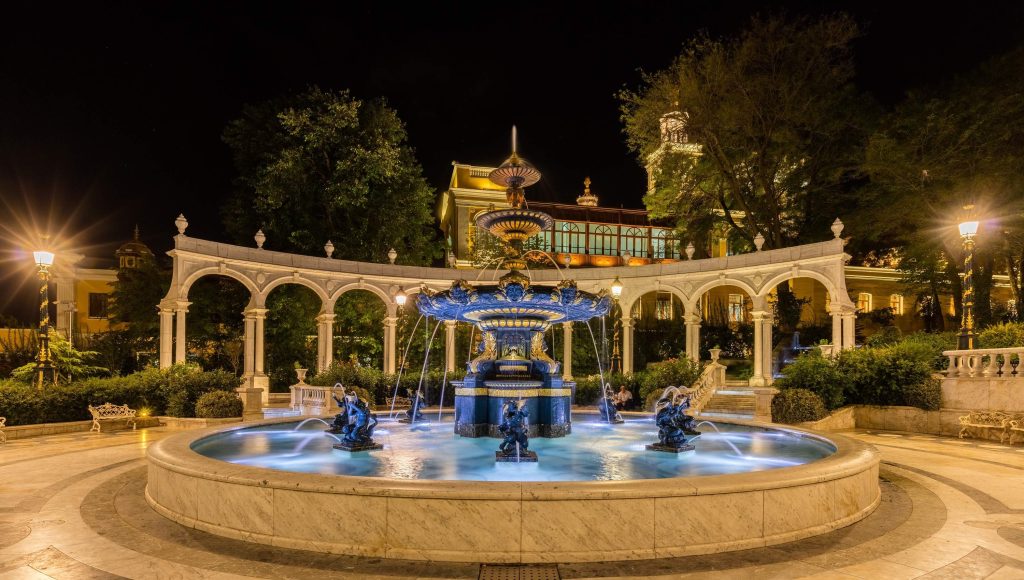
Indeed, landscape lighting serves as an extension of your living space, infusing character into every corner. The dark silhouette of a pergola lit by soft uplighting becomes an enchanting backdrop for late-night conversations; a garden path lit by subtle downlighting invites leisurely strolls under the stars; spotlights showcasing exquisite architectural elements turn ordinary walls into captivating canvases.
The potential for dramatic transformation that landscape lighting brings can be likened to stage lighting in theater – capturing attention, directing focus, setting mood, and evoking emotion. By understanding how light impacts space and perception, you can choreograph how people experience your outdoor environment after sunset.
Through thoughtful design and execution, landscape lighting not only increases safety but also enhances livability. As dusk descends each nightfall, transforming daylight hues into silhouettes, then darkness – inviting lights – guides home dwellers towards comfort while creating exquisite nighttime landscapes, becoming visual poetry under the moonlit sky.
Understanding Landscape Lighting
The concept of landscape lighting can be elusive, as it encompasses a wide variety of fixtures designed to illuminate the outdoor environment, enhancing both its aesthetic appeal and its safety. Landscape lighting is not merely a matter of installing lights haphazardly throughout your yard; it involves careful planning and selection of appropriate fixtures to highlight the most captivating features of your landscape and to ensure adequate visibility during nighttime hours.
Strategic lighting can transform an ordinary backyard into a magical oasis, breathe life into an otherwise inanimate statue, or create dramatic shadows that add depth to flat surfaces. The aim is to balance the artificial light with the natural moonlight, creating a harmonious blend that accentuates the landscape’s architectural details without overwhelming them. This delicate equilibrium is achieved by utilizing different types of fixtures, each serving a unique purpose.
The most common types are path lights, spotlights, floodlights, and well lights. Each possesses unique characteristics that render them suitable for specific roles within the larger scheme of landscape lighting. By understanding these fixtures more deeply, you will be better equipped to illuminate your landscape in ways that enhance its inherent beauty while preserving its natural ambiance.
Different Types of Landscape Lighting Fixtures: Their Role and Application
The Graceful Guiding Light: Path Lights
Path lights are designed for ground-level installation along walkways, driveways, or garden paths, providing soft yet sufficient lighting for safe navigation after sundown. These sentinel-like luminaries not only add dimensionality through light contrasts but also contribute towards defining boundaries within your exterior space.
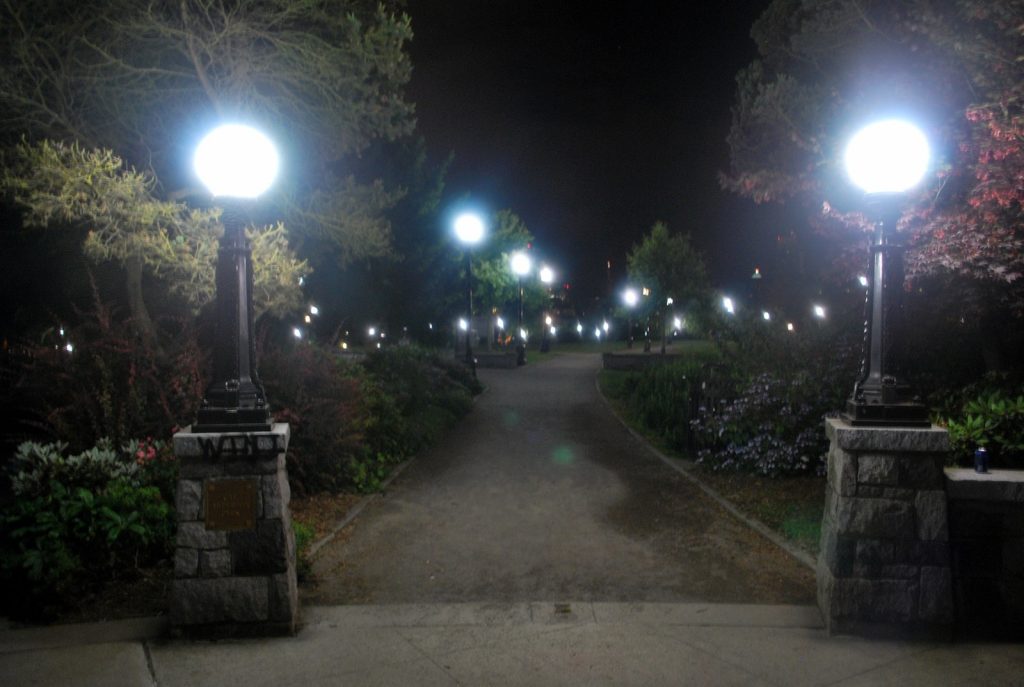
Beyond functionality, these aesthetically pleasing elements can easily enhance any exterior design theme, ranging from rustic charm to modern minimalism, depending on the style chosen. Whether highlighting stepping stones or lighting a winding garden pathway, their strategic positioning can create poetic interplays of light and shadow.
The Dramatic Illuminators: Spotlights
Spotlights, also known as directional lights, possess a more focused beam ideal for accentuating the landscape’s key features, such as statues, water features, or architectural details. By casting targeted rays of light onto specific objects or areas, they create an element of drama and visual interest.
Spotlights can be adjusted to provide varying degrees of light intensity, providing you with the flexibility to create your preferred lighting effects. Whether you wish to spotlight an artistic sculpture, draw attention to a blooming shrub, or cast long theatrical shadows on a wall, these fixtures allow for creative manipulation of your outdoor environment.
The Broad Beamed Assistants: Floodlights
Floodlights are high-intensity fixtures designed to project broad beams of light over expansive areas like large patios, driveways, and yards. Their powerful lighting capacity makes them perfect candidates for enhancing security by deterring potential intruders while concurrently contributing towards outdoor aesthetics when used judiciously.
Due to their intense brightness, they should be installed tactfully to avoid glaring effects that could overwhelm the subtle charm of other delicate lighting elements within your landscape design. Even though predominantly functional in nature, these powerful illuminators can be mastered into playing dramatic roles in highlighting trees or structures when positioned creatively.
The Discreet Performers: Well Lights
Well lights are ground-embedded fixtures virtually hidden from view that cast upward streams of light. They are typically utilized for uplighting purposes where the aim is creating dramatic emphasis on vertical elements such as tree trunks, pillars, or walls.
This type of fixture is perfect for those who prefer a minimalist approach to landscape lighting where hardware remains inconspicuous yet the impact is undeniably impressive. As they light up from below, well lights can create a stunning silhouette effect, highlighting the texture and form of the illuminated object in an incredibly captivating manner.
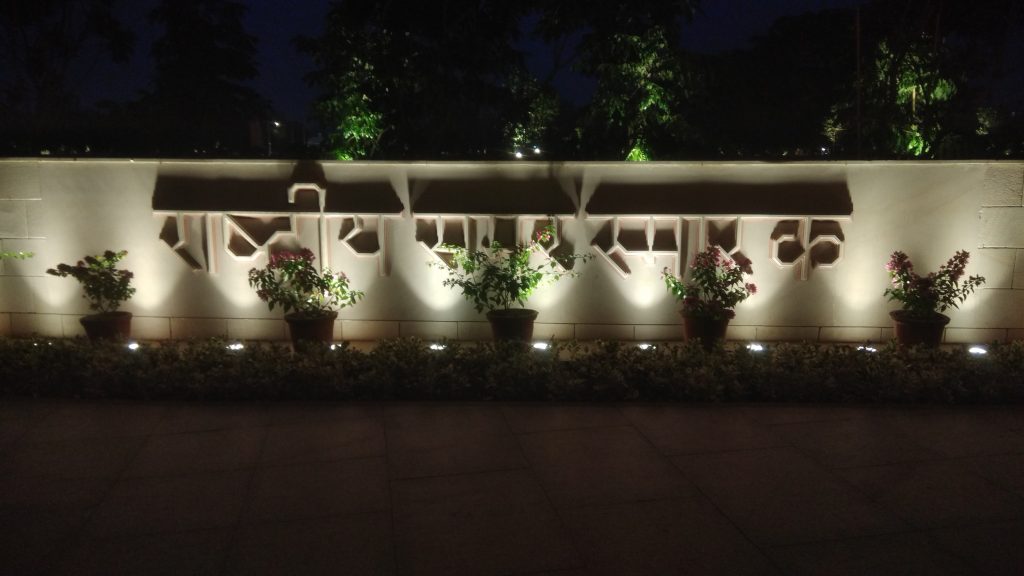
In essence, when it comes to landscape lighting, there is no one size fits all. The beauty lies in understanding the distinctive roles played by these different fixtures and orchestrating their use in a manner that brings out the best features of your outdoor space while making it safer and more inviting at night.
The Do’s of Landscape Lighting
Planning Your Design: Light with Intent
The first cardinal rule in crafting an effective landscape lighting design is proper planning. Crafting a detailed, thoughtful design plan is crucial and should not be downplayed.
Sketching out your landscape, noting the natural and architectural features, can provide an invaluable blueprint for your light installation process. Just as a painter sketches their subject before bringing it to life with color, so too must you identify and map out the key features of your yard that you wish to highlight.
Whether it’s a majestic oak tree or a charming garden path, these elements should take center stage in your lighting design. The aim here is not only to increase visibility but also to create atmosphere and highlight the beauty of your outdoor space when darkness falls.
As such, give thought to how different shadows might interplay with your lighting scheme or how various intensities of light might affect mood. Moreover, consider how the scene may change throughout the seasons. A spot that’s dormant in winter might burst with colors in spring.
Your lighting plan needs to be dynamic enough to enhance the beauty of each season. Yet importantly, consider functional aspects too while sketching a plan. For instance, lights leading from your back door to an outdoor seating area will ensure safe navigation while also providing an inviting glow that extends hospitality.
Choosing the Right Fixtures: Match Purpose with Presentation
When it comes to selecting fixtures for landscape lighting, one size does not fit all. Different types of lights serve different purposes, and understanding this can significantly impact the overall aesthetic appeal and functionality.
Spotlights can add drama by highlighting focal points in your yard like artworks or specimen plants, whereas path lights provide safe passage along walkways or steps without overpowering ambient lighting. Indeed, just as each piece of furniture in a room has its purpose and place, so too does each type of light fixture in your landscape design.
The key is to select fixtures that seamlessly match their purpose with their location. Moreover, while it might be tempting to choose lighting fixtures based solely on style, don’t forget to consider durability and proper material for your outdoor conditions.
It’s also wise to choose fixtures whose size and scale complement the surrounding landscape elements. Remember, the ultimate goal of your lighting fixtures isn’t just providing light; they should integrate into the landscape to enhance the overall curb appeal during daytime too.
Proper Positioning and Spacing: Light with Precision
Once you have chosen your right mix of lighting fixtures, positioning them properly is half the battle won. Correct placement of lights can create a subtle yet profound difference in how your garden appears after dusk.
Generally speaking, lights positioned lower give off a softer glow, while those placed higher generate more expanses of lighting. But remember not to overdo it – too much light or improperly placed lights can lead to harsh shadows or blinding glare.
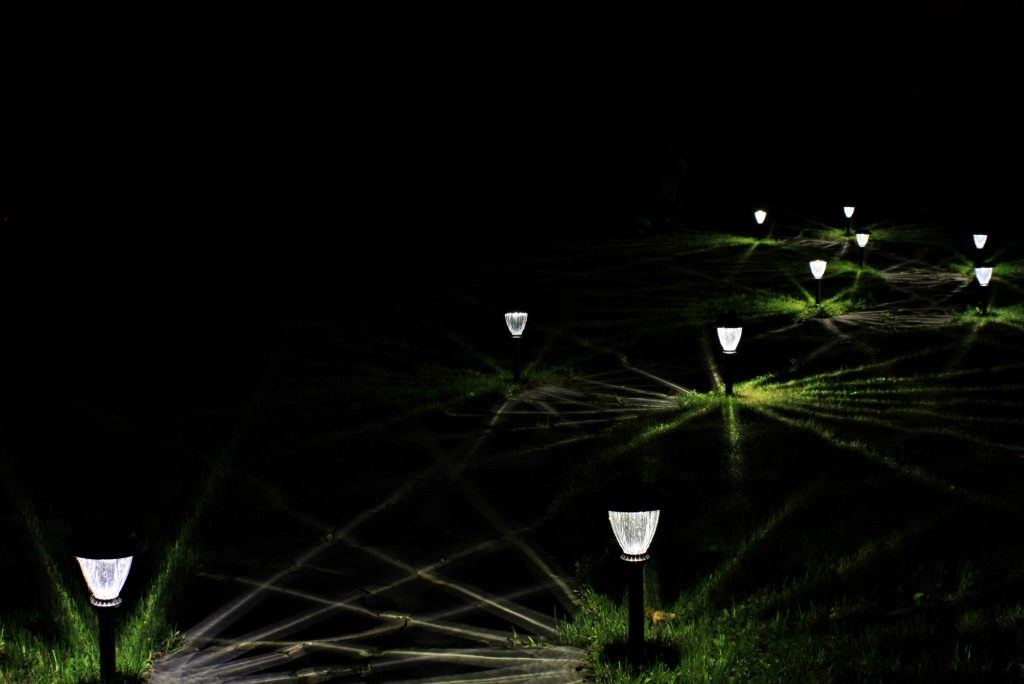
For path lights, consider placing them where they cast pools of light about 10 feet apart on either side. This will provide ample visibility without feeling like an airport runway. For spotlights or floodlights used for highlighting trees or buildings, place them at least 10 feet away from the object being lit to avoid creating hot spots.
Also important is taking into account how spaced out your lights are from one another. Too much distance might leave dark patches, while too close could result in overlit sections draining out nuance and contrast. The aim is achieving balance – you want enough light for function without losing ambiance.
Utilizing a Variety of Lights: Diversify Your Lighting Portfolio
Just as in investing one wouldn’t put all their eggs in one basket, so too when designing landscape lighting, don’t limit yourself by using only one type of fixture or lighting technique. A truly impressive lighting scheme incorporates a mix of different light types and techniques, each serving its own unique purpose.
Path lights are great for lining walkways, while spotlights can highlight specific features in your yard. Similarly, floodlights can be used for general lighting of larger areas, while well lights tucked into the ground can light up walls or large trees from below. Using only one type of light fixture could result in monotony and a lack of depth.
In contrast, combining different fixtures and techniques creates layers of interest and depth that will make your landscape come alive at night. Moreover, each type of light has its own unique properties and effects. Some provide a broad wash of light; others focus the lighting on a particular object or area. Experimenting with these varieties will help you achieve optimal aesthetics.
Energy Efficiency: Brighten Without the Burden
In today’s eco-conscious world where sustainability is key, opting for energy-efficient landscape lighting solutions is not just responsible but also cost-effective in the long run. One way to ensure energy efficiency is by using LED bulbs instead of traditional incandescent ones.
LEDs are more resilient to weather changes, last longer (up to 20 times!) than their incandescent counterparts, and consume much less electricity, making them an eco-friendly choice without compromising luminescence quality. Solar-powered lights are another great option, especially for areas that receive good sunlight during the day.
They charge during the day with solar power and provide beautiful lighting at night without any additional power cost or wiring hassles! Another method for conserving energy is utilizing timers or dimmers, which allow you to control when your outdoor lights go on and off or regulate their brightness level – preventing unnecessary waste while offering convenience.
Maintenance Tips: Keep the Lights Shining Bright
Proper maintenance is essential to keep your landscape lighting system functioning optimally over time. Regular cleaning ensures that fixtures continue to shine bright, free from obstructions like dirt, leaves, or snow.
Bulb replacement is another crucial aspect of maintenance. Use this opportunity to upgrade to more energy-efficient bulbs if you haven’t already. Moreover, always keep a spare set of bulbs handy to ensure a faulty bulb doesn’t leave your landscape in the dark!
Wiring and connections should be checked regularly for any signs of wear and tear that could pose a safety risk. And don’t forget about trimming foliage around your lights too – overgrown plants can block illumination or create unwanted shadows.
Above all, remember that maintenance isn’t just about reacting when something goes wrong. Regular check-ups will allow you to spot potential issues before they become major problems, keeping your landscape lighting system running smoothly for years to come.
The Don’ts of Landscape Lighting
Avoid Over-Lighting: The Art of Subtlety
One of the most prevalent and detrimental mistakes made in landscape lighting is over-lighting. When it comes to lighting your outdoor spaces, more is not always better. A surfeit of light can create a glaring effect that is harsh on the eyes and detracts from the overall ambiance. Furthermore, excessive lighting can obscure the stars and mute the ethereal beauty of nightfall.
Over-illumination also leads to unnecessary energy consumption and elevated electricity bills. It’s essential to strike a balance between enhancing your property’s aesthetics and its environmental footprint. Using lighting strategically rather than excessively will achieve a welcoming, warm atmosphere without causing ecological harm.
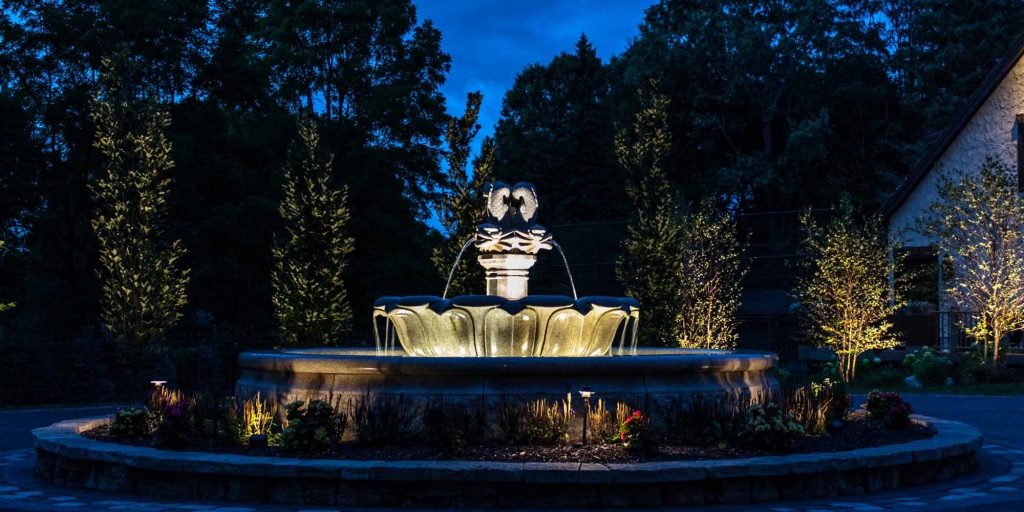
The key lies in judicious use – highlighting focal points, enhancing textures, lending depth to flat surfaces – all while maintaining a sense of harmony with the night. Remember, landscape lighting should extend day into night subtly rather than replicate daytime brightness.
To avoid over-lighting, employ dimmers or timers that automatically adjust illumination levels or switch off lights when not needed. Moreover, utilizing fixtures with shields or baffles can help direct light precisely where it’s required without contributing to light pollution.
Ignoring Safety Aspects: Lighting With Care
While landscape lighting adds visual appeal and ambiance, it also plays a critical role in ensuring safety. Poorly placed or improperly installed lights can pose various hazards – from tripping over concealed wires to knocking over unstable fixtures. Meticulous planning and careful execution of your lighting plan can prevent such accidents. Ensure that paths are well lit without glaring light sources that may obscure vision. Also, keep wires neatly tucked away or buried to avoid trips and falls.
Not Considering Neighbors: Responsible Illumination
While you may relish your artistically lit garden or walkway, spare a thought for your neighbors. Thoughtless placement or misuse of outdoor lights can lead to ‘light trespass’, which refers to unwanted or intrusive light spilling onto others’ properties – disrupting their tranquility and privacy.
Some ways to prevent this include positioning lights so they’re directed downward rather than outward, using lower-wattage bulbs where possible, and employing fixtures designed to prevent unwanted scattering of light. Observing these practices not only preserves a harmonious relationship with your neighbors but also enhances the night sky’s dark beauty, allowing everyone to enjoy a clear, star-studded view.
Neglecting Natural Light Sources: Harnessing Mother Nature’s Lighting
In our quest for perfect outdoor lighting, we often overlook nature’s own luminous sources – moonlight and starlight. These natural light sources can lend an enchanting dimension to your landscape when used in tandem with artificial lights.
Moonlight filtering through trees creates intriguing shadows and silhouettes, which add depth and mystery to the landscape. On clear nights, the soft glow of stars subtly fills open spaces – adding magic without the need for extra lights.
Forgetting About Maintenance: The Importance of Regular Upkeep
A beautifully lit garden can quickly lose its charm due to neglect and poor maintenance. Regular cleaning of fixtures will ensure that they emit light efficiently while prolonging their lifespan. Similarly, replacing burnt-out bulbs promptly will prevent dark patches in your landscape, which could be safety hazards.
Conclusion: The Do’s and Don’ts of Landscape Lighting
The art of landscape lighting is a delicate balancing act between aesthetics, neighborliness, safety considerations, respect for natural lighting sources, and regular maintenance. Adhering to these do’s and don’ts will ensure that your landscape is not only beautifully lit but also harmonious with its surroundings and sustainable. Remember, the same way that a well-written symphony isn’t about playing all the notes loudly, effective lighting design isn’t about using all the lights brightly – it’s about creating a beautiful composition that resonates with its audience.
You may also be interested in the following posts:
